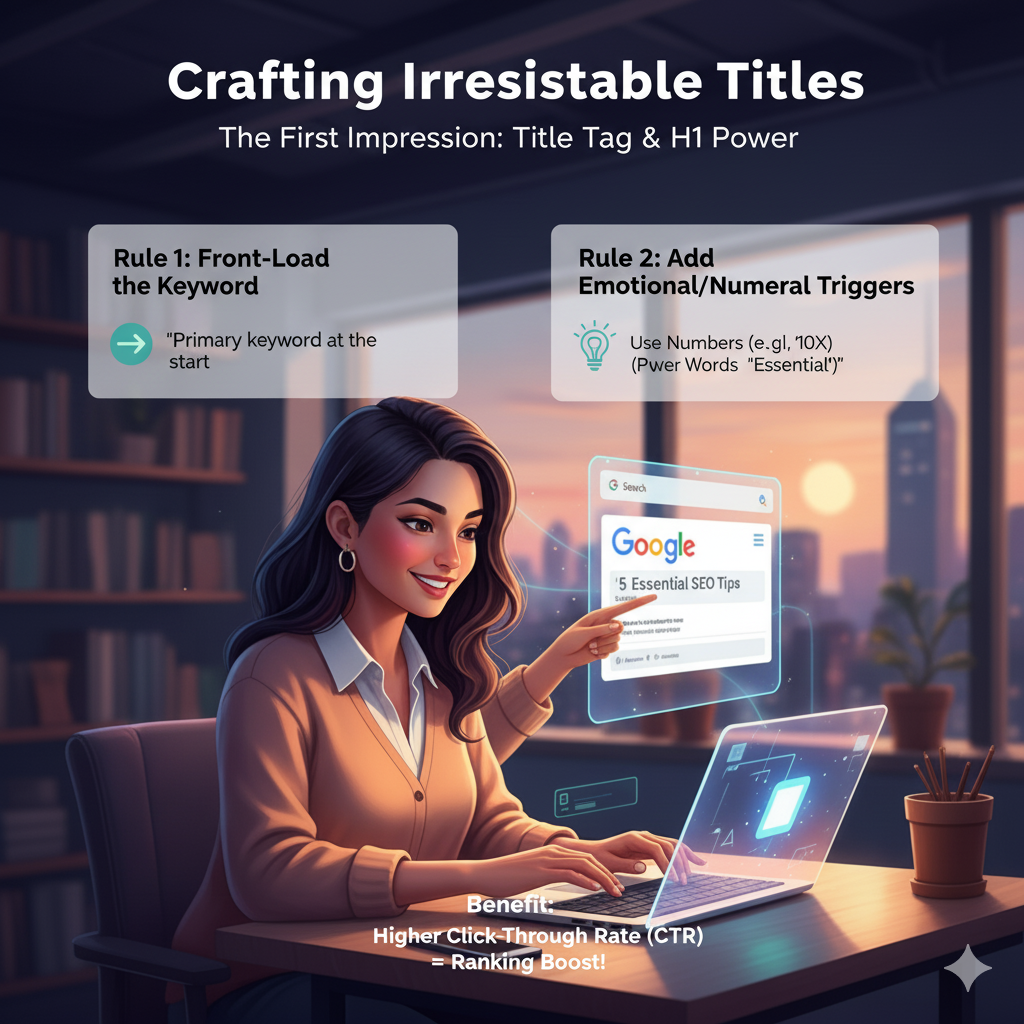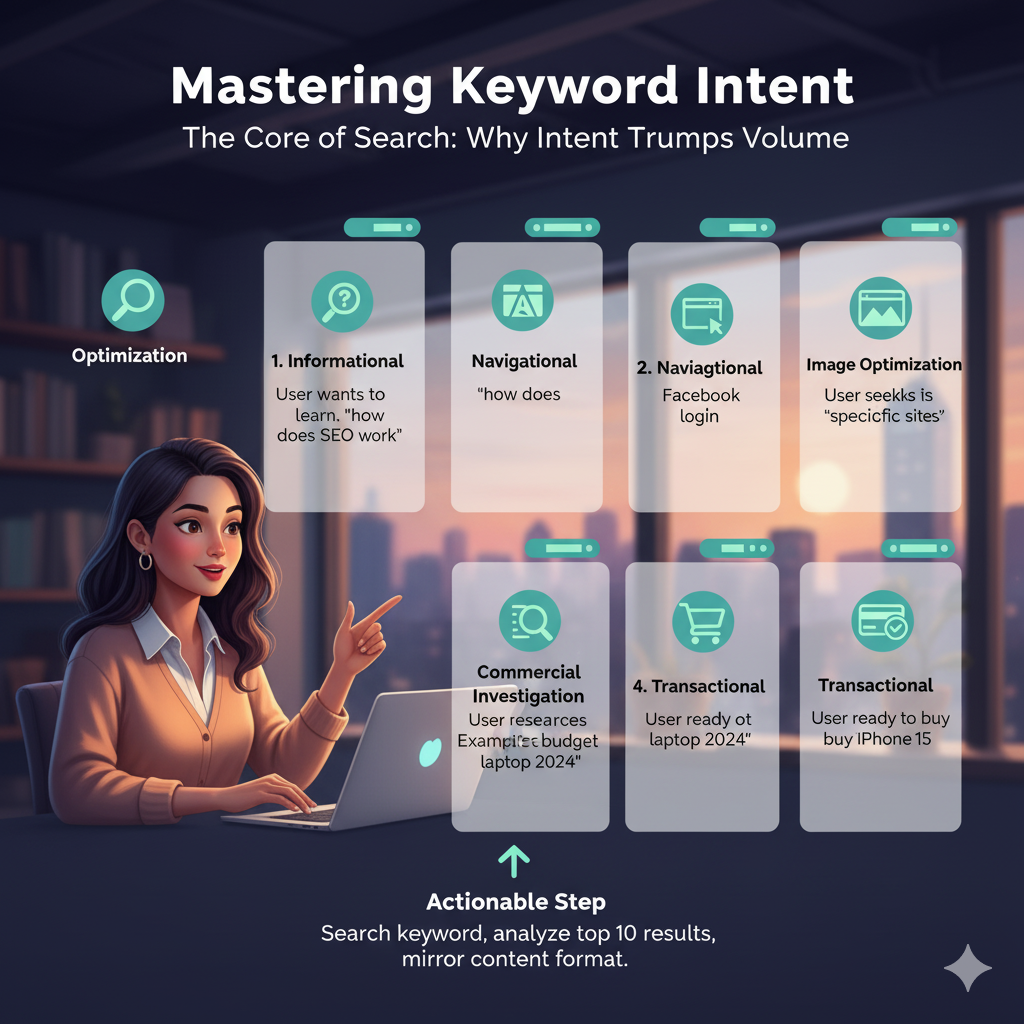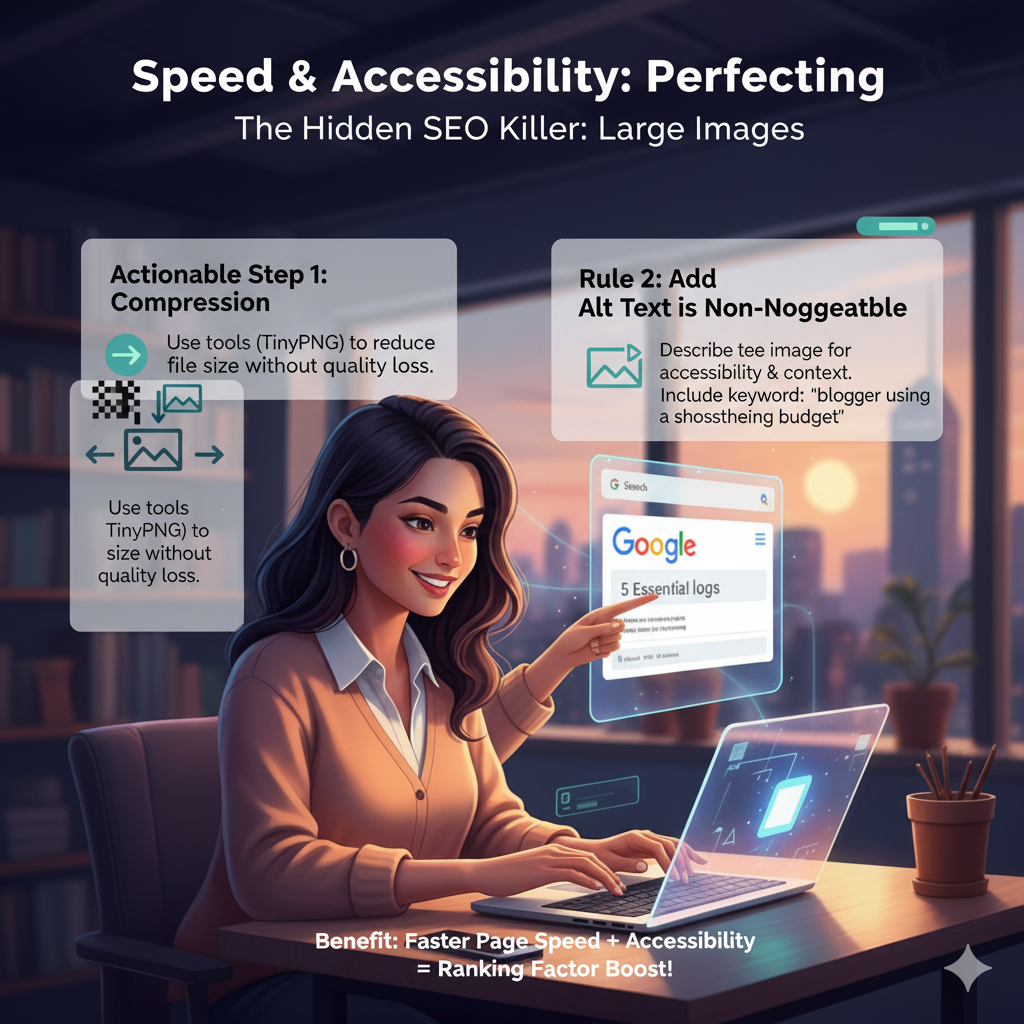
As a blogger, you might be tempted to ignore it, focusing only on writing great content.
But here is the hard truth: great content that isn’t optimized is great content that no one will ever read.
The good news?
The most impactful SEO optimizations are not technical; they are foundational.
They are about structure, clarity, and user experience.
You can apply these five basic principles to every post you write, starting today, and watch your organic traffic begin to climb. Forget the expensive tools for now—this is about smart, focused effort.

Optimization 1: The Core of Search—Mastering Keyword Intent
Why Intent Trumps Volume
Many new bloggers focus on a keyword’s search volume—the number of people searching for it. A smarter approach is to focus on keyword intent:
why is the user typing this into Google? Google’s entire mission is to deliver the most relevant result for a user’s query. If your content doesn’t match the intent, you will never rank, no matter how good your writing is.
There are four main types of intent:
- Informational: The user wants to learn. (e.g., “how does SEO work”)
- Navigational: The user wants to go to a specific site. (e.g., “Facebook login”)
- Commercial Investigation: The user is researching a purchase. (e.g., “best budget laptop 2024”)
- Transactional: The user is ready to buy. (e.g., “buy iPhone 15”)
Actionable Steps for Intent
Before writing, search your target keyword on Google.
Analyze the top 10 results.
Are they lists?
Tutorials? Product reviews? Your content must mirror the format of the top-ranking pages to satisfy the user’s intent.
If the top results are all “Top 10” lists, and you write a personal essay, you are fighting a losing battle.

Optimization 2: The First Impression—Crafting Irresistible Titles
The Power of the Title Tag and H1
Your Title Tag (what appears in Google search results) and your H1 (the main title on your blog post) are the two most important text elements for SEO.
They must be compelling enough to earn the click and clear enough for Google to understand the topic.
Rule 1: Front-Load the Keyword. Place your primary keyword as close to the beginning of the title as possible.
This gives it maximum weight and immediately signals relevance to both the user and the search engine.
Rule 2: Add Emotional or Numerical Triggers.
Use numbers (“5 Basic Optimizations”) or emotional words (“Irresistible,” “Essential,” “Definitive”) to increase the click-through rate (CTR).
A higher CTR signals to Google that your result is highly relevant, often leading to a ranking boost.
Optimization 3: Speed and Accessibility—Perfecting Image Optimization
The Hidden SEO Killer: Large Images
Page speed is a critical ranking factor, especially on mobile devices.
The number one culprit for slow-loading blogs is unoptimized images. This is a basic optimization that yields massive speed improvements.
Actionable Step 1: Compression. Use a free online tool like TinyPNG or a WordPress plugin like Smush to compress your images before uploading them.
This reduces the file size without noticeable loss of quality.
Actionable Step 2: Alt Text is Non-Negotiable.
The Alt Text (Alternative Text) is a text description of the image.
It is used by screen readers for visually impaired users (accessibility) and by search engines to understand the image’s context. Always fill it out, and if the image is relevant to your topic, include your keyword naturally.
Example: Instead of `image-123.jpg`, use `alt=”blogger using laptop on a shoestring budget”`.

Optimization 4: Building Authority—The Power of Internal Linking
Guiding the User and the Bot
Internal linking is the practice of linking from one page on your website to another page on your website.
It is the easiest SEO win because it is entirely within your control and requires no external approval.
Benefit
1: User Experience. Internal links keep users on your site longer, reducing your bounce rate and increasing page views, which are positive signals to Google.

Benefit 2: Authority Flow (Link Juice).
When a high-authority page links to a new, low-authority page, it passes some of its authority (often called “link juice”) to the new page, helping it rank faster.
Actionable Step: In every new post, aim to include at least 3-5 relevant internal links to older posts.
Use descriptive anchor text (the clickable words) that includes the keyword of the page you are linking to.
For example, link the phrase “keyword research tools” to your article about keyword research.
Optimization 5: Free Intelligence—Leveraging Google Search Console
Your Direct Line to Google
Google Search Console (GSC) is a free tool provided by Google that is absolutely essential for every blogger.
It is your direct line of communication with the search engine and provides invaluable data on your performance.
Actionable Step 1:
Submit Your Sitemap. Make sure your sitemap (generated by your SEO plugin) is submitted to GSC. This ensures Google knows about all your pages and can crawl them efficiently.
Actionable Step 2: Find “Hidden” Keywords.
The “Performance” report in GSC shows you the exact keywords your pages are ranking for, even if they are on page 2 or 3. Look for keywords where you have a high number of impressions but a low CTR.

This is a golden opportunity: simply rewrite your title tag and meta description (Optimization 2) to be more compelling, and you can instantly boost your traffic without writing a new word.
Actionable Step 3: Fix Errors. GSC will notify you of any crawl errors, mobile usability issues, or security problems.
Fixing these technical issues is a quick win that removes barriers to ranking.
Conclusion: Consistency is the Real SEO Secret
SEO is not a one-time task; it is a continuous process.
By integrating these five simple optimizations into your regular blogging workflow—from keyword research to final publishing—you will establish a powerful, organic growth engine.
Start small, be consistent, and watch your blog transform from a hidden gem into a recognized authority.
